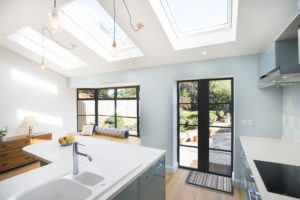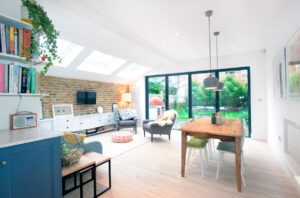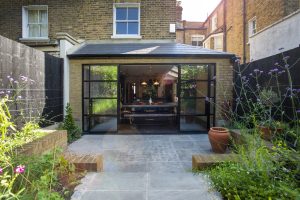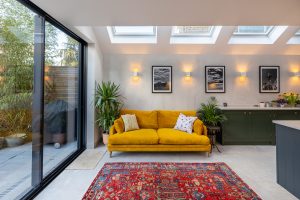When it comes to embarking on a new home extension, one of the most exciting aspects is choosing the design style. Not only will it enhance your living space but also reflect your taste and lifestyle. The UK boasts a rich architectural heritage, and this diversity is mirrored in the array of design trends available to homeowners today. Whether you’re drawn to the clean lines and sleek finishes of contemporary minimalism or the timeless elegance of traditional architectural styles, your choice will set the tone for your extended living space.
The UK’s design landscape offers a tapestry of possibilities, from the bustling streets of London townhouses to the picturesque countryside cottages. So, whether you’re envisioning a cutting-edge, modern extension or a space that seamlessly merges with the historical charm of your existing home, our article will help you navigate the intricacies of these design trends.
But it’s not just about aesthetics. Your design choice also impacts functionality, comfort, and how well your extension integrates into your daily life. In this article, we’ll delve into the practical aspects, ensuring your selected style not only captivates the eye but also enhances your overall living experience.
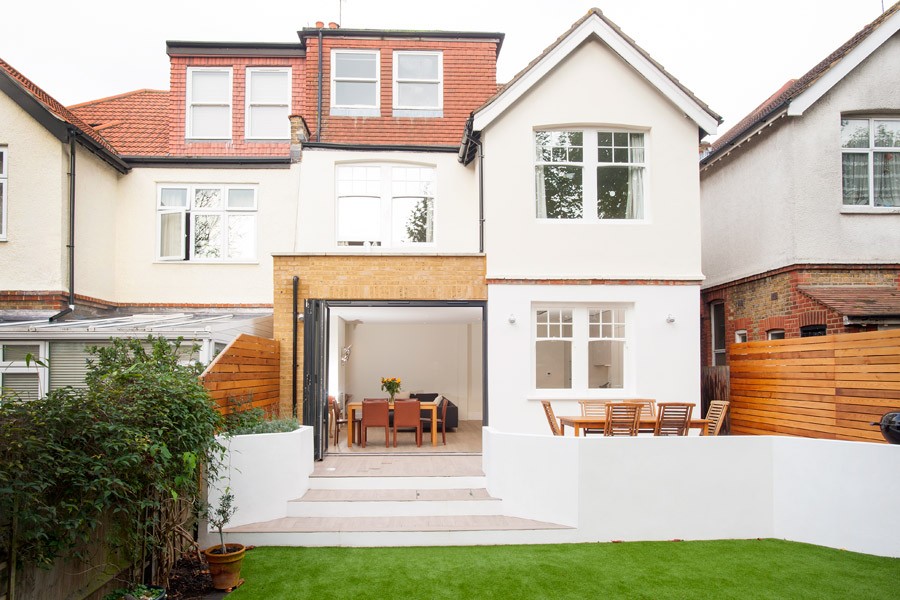
Contemporary Minimalism: Embracing Simplicity
Contemporary minimalism has taken the design world by storm, offering a sleek and uncluttered aesthetic perfect for those who appreciate clean lines and a sense of spaciousness. This design trend often translates into home extensions characterised by open floor plans, large windows, and a focus on functionality. Minimalist homes often incorporate neutral colour palettes like whites, greys, and blacks to create a sense of calm and simplicity.
For example, you might install floor-to-ceiling windows in your home extension, flooding the space with natural light and providing unobstructed views of your garden or surroundings. The minimalist design also encourages using high-quality materials like glass, steel, and concrete, giving your extension a contemporary edge. The key to success with contemporary minimalism lies in decluttering your space and opting for furniture and decor that serves a purpose while maintaining a sense of elegance and simplicity.
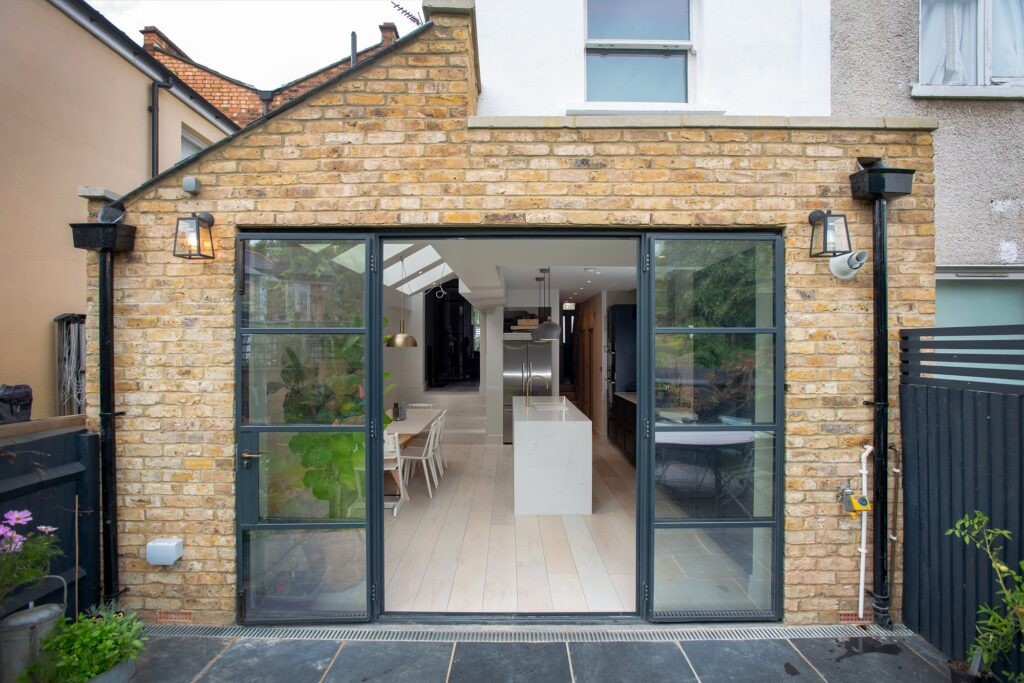
Classic Elegance: Timeless Appeal of Traditional Styles
Traditional design trends in the UK often draw inspiration from historical architectural styles such as Georgian, Victorian, or Tudor. These designs emphasise intricate detailing, ornate mouldings, and a sense of timeless elegance. When opting for a traditional style in your home extension, you’re embracing the rich history of British architecture.
Consider incorporating sash windows and decorative cornices to capture the essence of classic British design. Traditional materials like brick, stone, and wood can also create a warm and inviting atmosphere. Traditional home extensions often emphasise symmetry and balance, creating a sense of comfort and familiarity. It’s a style that resonates with those who appreciate the beauty of bygone eras and want to infuse their home with a sense of heritage.
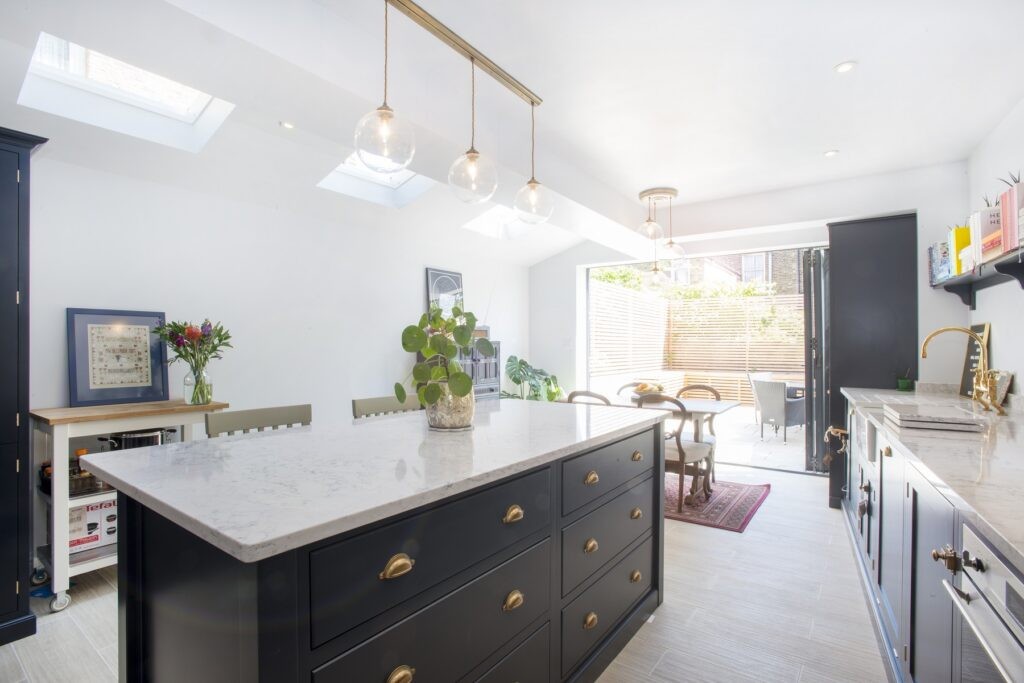
Transitional Design: Striking a Perfect Balance
Transitional design is about striking the perfect balance between modern and traditional elements, creating a harmonious blend that appeals to a wide range of tastes. This approach can result in home extensions seamlessly integrating with existing architectural styles while incorporating contemporary conveniences. For instance, you might retain your home’s original brickwork while adding a modern glass extension at the rear. This combination marries the charm of traditional materials with the light-filled spaces and clean lines of contemporary design. Transitional designs often feature a mix of classic and modern furniture and decor, creating a sense of timelessness with a contemporary twist.
Furthermore, the art of transitional design lies in the thoughtful fusion of old and new. It’s not merely about juxtaposing elements but instead finding synergy between them. Consider incorporating architectural details from your existing home into your modern extension, such as matching mouldings or flooring materials. This subtle continuity creates a sense of flow and harmony throughout your living space.
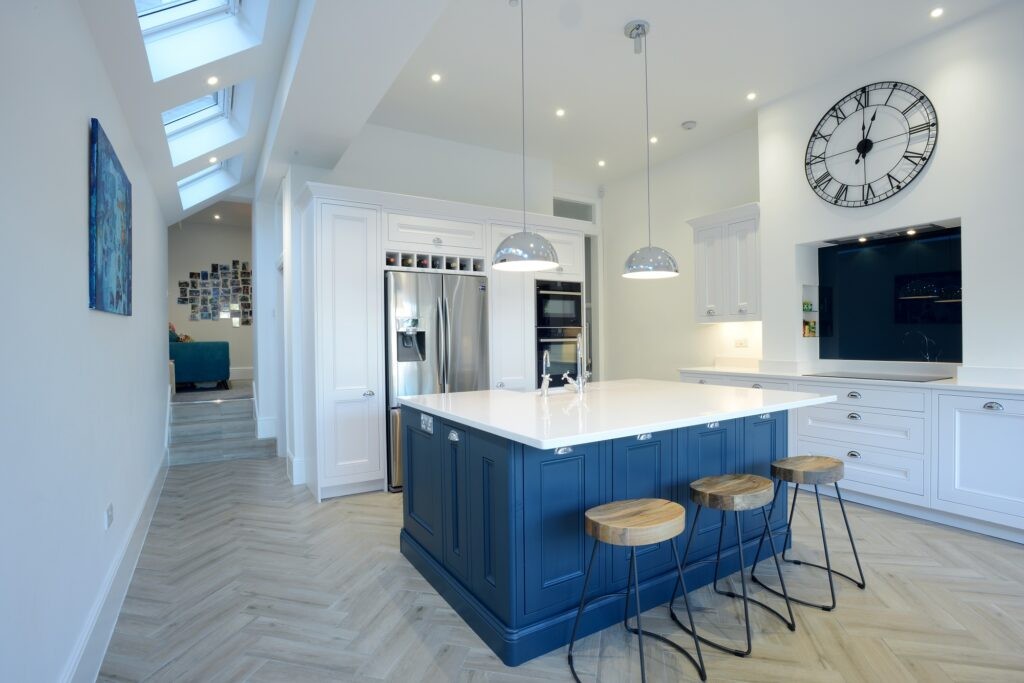
Innovative Materials and Technologies: Modern Advancements
Modern home extensions benefit from cutting-edge materials and technologies that enhance aesthetics and functionality. For example, using energy-efficient glazing systems allows for abundant natural light and helps regulate indoor temperatures, reducing energy consumption.
Innovative materials like reclaimed wood or engineered stone provide the look of traditional materials with added durability and sustainability. Moreover, integrating smart home technology lets you easily control lighting, heating, and security systems. These advancements ensure your modern home extension is as practical and efficient as visually appealing.
Moreover, in the realm of innovative materials and technologies, your options are vast and continually evolving. For instance, energy-efficient glazing systems not only enhance natural light but also contribute to a greener footprint by reducing your reliance on artificial lighting and heating. This not only reduces energy consumption but also lowers utility bills, making your modern extension a wise long-term investment.
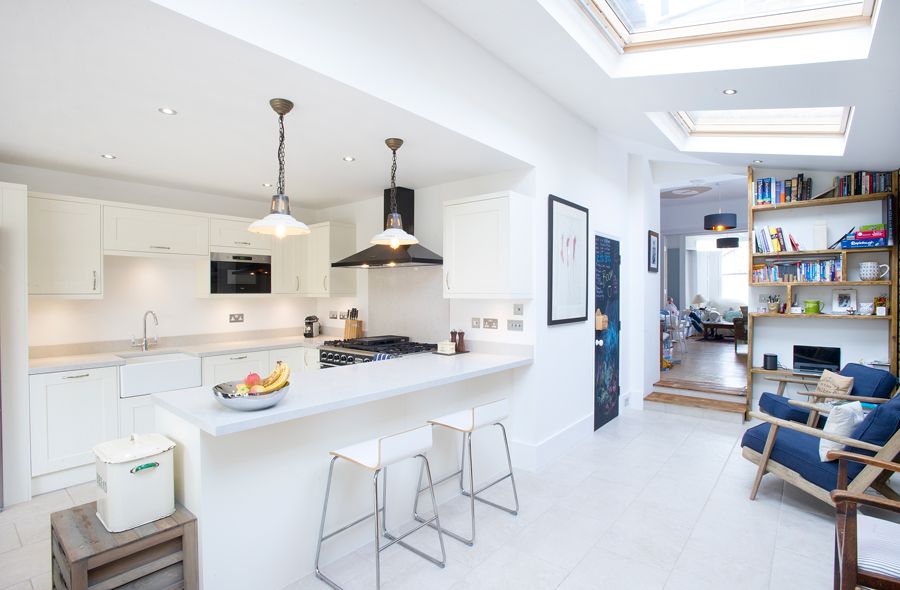
Creating Functional Spaces: Modern Living vs. Traditional Comfort
While design aesthetics are important, it’s equally crucial to consider how your home extension will function daily. In modern designs, functional spaces often take centre stage. This could mean an open-plan kitchen and dining area that encourages social interaction or a home office that maximises productivity with built-in storage and ergonomic furniture.
In contrast, traditional designs prioritise comfort and cosiness. Consider creating inviting reading nooks, warm hearths, or elegant dining rooms where family and guests can gather for long meals and conversations. The key is to tailor your extension to your lifestyle, ensuring it looks stunning and enhances your daily life.
Furthermore, when designing functional spaces in your home extension, consider the unique needs of your household. In modern living spaces, versatility is often a key factor. For instance, a well-designed open-plan area can easily transition from a family breakfast hub to an entertaining space for guests. In contrast, traditional comfort spaces cater to specific activities. Your cosy reading nook may be adorned with bookshelves and comfortable seating, offering a retreat for literary enthusiasts.
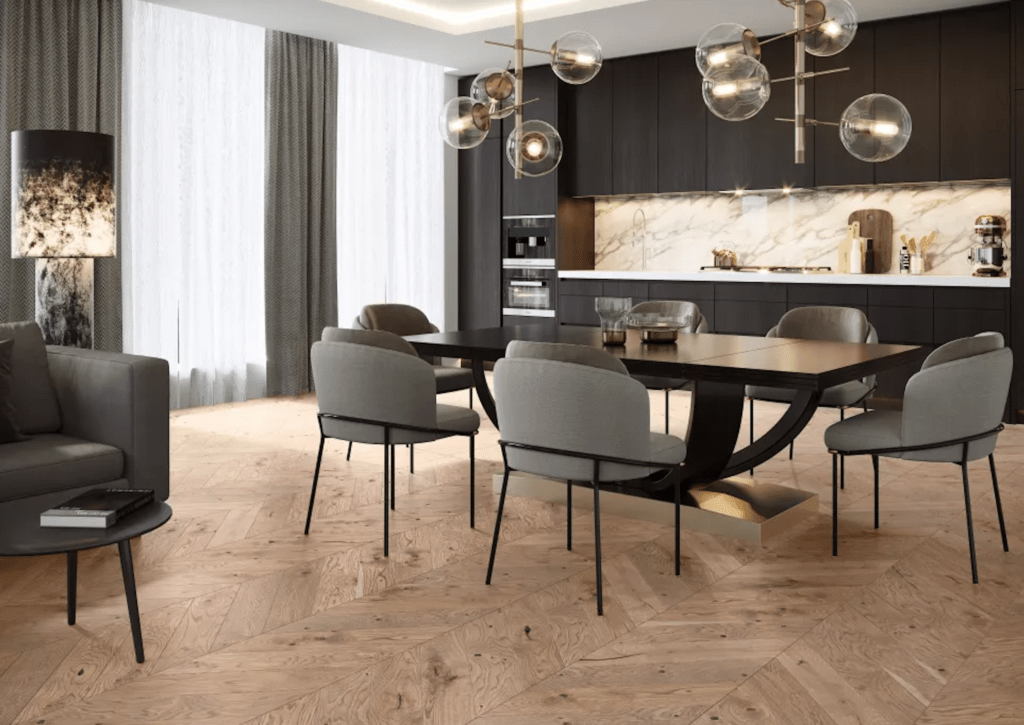
Cost Considerations: Budgeting for Your Chosen Style
When planning your home extension, it’s essential to be mindful of your budget, as choosing between modern and traditional design can have financial implications. Contemporary designs may require more investment in high-end materials and technology, while traditional designs could involve skilled craftsmanship for intricate details.
Consider not only the initial construction costs but also long-term maintenance expenses. For instance, modern materials may require less maintenance, reducing upkeep costs. Additionally, energy-efficient technologies in modern designs can lead to long-term savings on utility bills. Carefully assess your budget and weigh the upfront costs against your chosen design style’s potential savings and benefits.
Moreover, it’s crucial to factor in the value your chosen design style adds to your property. While modern designs can sometimes have higher upfront costs, they often have a strong appeal in the real estate market, potentially increasing the resale value of your home. Conversely, the timeless charm of traditional designs can also be a significant selling point, especially in historic neighbourhoods or areas with a preference for classic aesthetics. By considering both short-term and long-term financial aspects, you can make an informed decision that suits your budget and maximises the return on your investment.
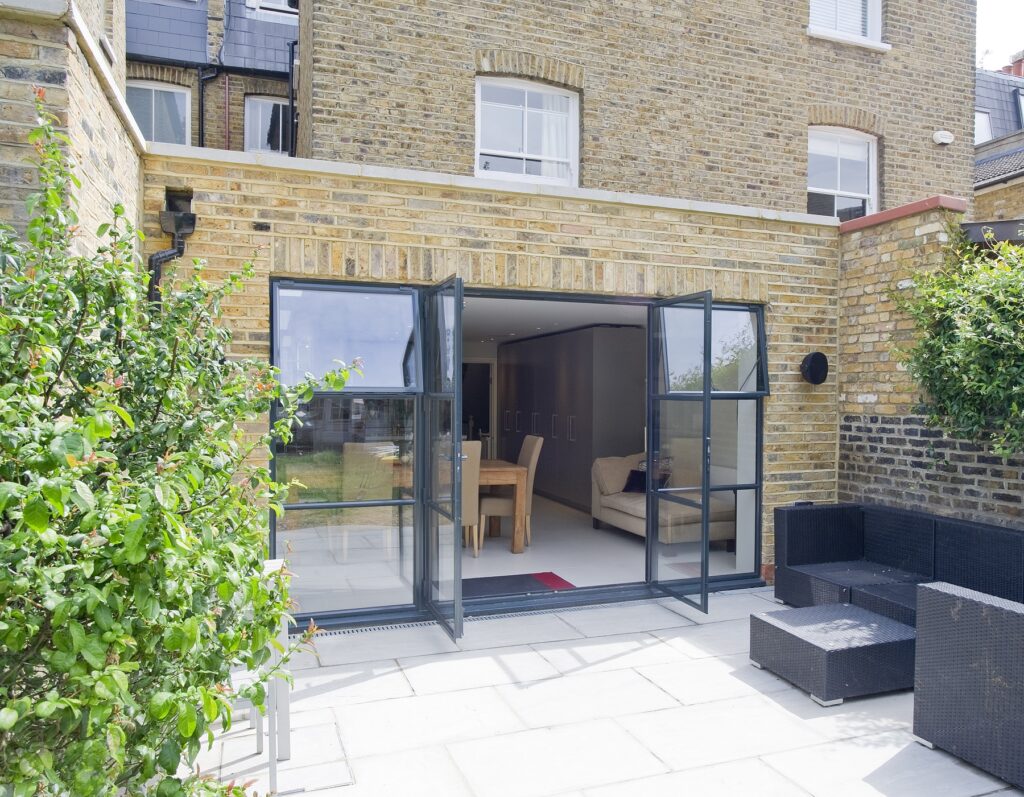
Sustainable Design: Eco-Conscious Choices for UK Home Extensions
Sustainable design is a growing trend in the UK, reflecting a commitment to environmentally friendly practices and reducing a home’s carbon footprint. When planning your home extension with sustainability in mind, you’ll contribute to a greener future while enjoying the benefits of energy efficiency.
Incorporating sustainable features can involve using renewable and recycled materials, such as reclaimed wood or recycled glass, for your extension’s construction. Consider solar panels, rainwater harvesting systems, or energy-efficient insulation to reduce energy consumption.
The UK government encourages eco-friendly home improvements through various grants and incentives, making it even more appealing to embrace sustainable design. Beyond the environmental benefits, sustainable home extensions often result in lower energy bills and increased property value, making it a wise investment for the long term.
Additionally, sustainable design can be seamlessly integrated into modern and traditional styles, allowing you to enjoy the best of both worlds: a beautiful, environmentally responsible home extension that enhances your living space while minimising its impact on the planet.


